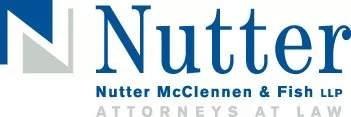The Protecting Americans from Tax Hikes Act of 2015 (PATH) was signed into law by President Obama on December 18, 2015. PATH provides permanent extensions of certain tax benefits for individuals that have long been temporary, most notably including a provision allowing IRA charitable rollovers. IRA charitable rollover provisions were first enacted as part of The Pension Protection Act of 2006, but only in temporary form, and since 2006 the provision has been renewed five times. In making the IRA charitable rollover permanent, PATH eliminates one source of uncertainty surrounding charitable planning.
The IRS charitable rollover provision allows IRA owners age 70 ½ and older to donate as much as $100,000 a year directly to one or more qualifying charities. The donations, which count as part of the IRA owner's required annual withdrawal, are excluded from the taxpayer's income. As in prior years, contributions made to non-operating private foundations, donor-advised funds, and supporting organizations do not qualify for the rollover benefit, nor do distributions from employer-sponsored retirement plans such as SIMPLE IRAs and SEPs. In addition, the rollover must be distributed directly from an IRA custodian to the designated charity. The provision is retroactive to January 2015, and gifts for 2015 must be made by year-end.
Who is most likely to benefit from using the IRA charitable rollover?
Taxpayers with significant charitable contributions
Charitable deductions cannot exceed 50% of a taxpayer's adjusted gross income in any year. Those who make significant contributions can benefit from the rollover, since this technique does not rely on the charitable deduction, which contains the percentage limit.
Taxpayers subject to a state income tax
Massachusetts and several other states do not permit a state income tax charitable deduction. By using the rollover, state income tax may be reduced.
Taxpayers who may be subject to the AMT
Certain itemized deductions, including those for state income taxes and real estate taxes, can cause a taxpayer to become subject to the federal alternative minimum tax (AMT). The AMT (which imposes a maximum rate of 28%) is designed to ensure that high income taxpayers pay a minimum amount of income tax and do not receive undue advantage from itemized deductions. Massachusetts residents have relatively high state income tax deductions, and may be more likely to be subject to AMT, which may make the exclusion of IRA charitable rollovers from income more attractive.
Taxpayers who do not itemize
Individuals who do not itemize deductions (but plan to make charitable contributions) can benefit by using IRA charitable rollovers. Because they use the standard deduction, they would not normally save income taxes by making a charitable contribution. The IRA charitable rollover permits a non-itemizer to exclude the distribution from income and pay less income tax.
Conclusion
Now that PATH has made the IRA charitable rollover permanent, IRA owners should consider potential tax benefits from utilizing this charitable giving strategy. For 2015, the decision must be made quickly (by December 31st).
Originally published December 18, 2015
This update is for information purposes only and should not be construed as legal advice on any specific facts or circumstances. Under the rules of the Supreme Judicial Court of Massachusetts, this material may be considered as advertising.

